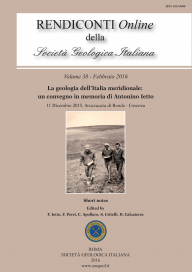
UV Fluorescence as tool to evaluate the biotic encrustation pervasiveness on under water amphorae near Crotone (Calabria-Italy)
Anna Maria De Francesco (a), Roberta Scarpelli (a), Adelaide Mastandrea (a), Adriano Guido (a) & Domenico A.M. Marino (b)
(a) Department of Biology, Ecology and Earth Sciences, University of Calabria, Ponte Pietro Bucci, 87036 Arcavacata di Rende (CS), Italy.
(b) Archaeological Superintendence of Friuli Venezia Giulia – MIBACT, Viale Miramare 9, 34132 Trieste, Italy. Corresponding author e-mail: roberta.scarpelli@unical.it
Volume: 38/2016
Pages: 32-34
Abstract
Underwater ceramic sherds, found in the harbor of Crotone (Calabria, Italy), were analyzed with different analytical methods. The pottery fragments, mostly amphorae, are characterized by a great layer of encrustation on the surface. Archaeological information are very poor, no assumption about provenance and technology, these ceramics are only doubtfully dated to Medieval times.
The petrographic (Optical Microscopy) and chemical analyses (X-Ray Fluorescence) on the ceramic of Crotone evidenced a strong compositional heterogeneity. Comparison with literature data supported two different production areas: Western (Southern Italy) and Aegean area.
UV Fluorescence on biotic crusts, allows to evaluate the relationship between the biotic colonization and the ceramic paste and to trace the alteration pervasiveness due to the encrusting organisms.
Keywords
Get Full Text